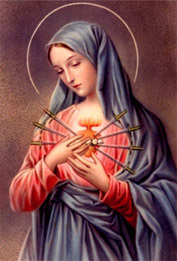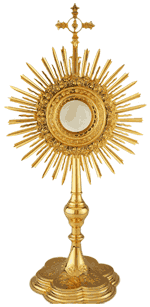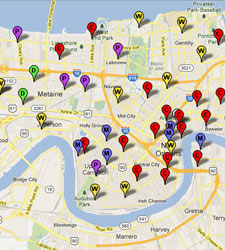 Over thirty days, the Church has celebrated four feasts of the Blessed Virgin Mary: the Assumption (August 15), the Queenship (August 22), the Nativity (September 8), and the Holy Name of Mary (September 12). On September 15, we usually recall “Our Sorrowful Mother,” also known as Mater Dolorosa in Latin. This year the feast will be preempted by the Sunday Mass.
Over thirty days, the Church has celebrated four feasts of the Blessed Virgin Mary: the Assumption (August 15), the Queenship (August 22), the Nativity (September 8), and the Holy Name of Mary (September 12). On September 15, we usually recall “Our Sorrowful Mother,” also known as Mater Dolorosa in Latin. This year the feast will be preempted by the Sunday Mass.
Over the centuries, the Church has recognized popular devotion to seven sorrows of Mary: (1) the Prophecy of Simeon over the Infant Jesus (Lk 2:34); (2) the Flight into Egypt of the Holy Family (Mt 2:13); (3) the Loss of the Child Jesus for Three Days (Lk 2:43); (4) the Meeting of Jesus and Mary along the Way of the Cross (Lk 23:26); (5) the Crucifixion, where Mary stands at the foot of the cross (Jn 19:25); (6) the Descent from the Cross, where Mary receives the dead body of Jesus in her arms (Mt 27:57); and (7) the Burial of Jesus. (John 19:40). Numerous devotions, and even religious orders, have arisen around meditation on the Seven Sorrows.
Our Lady of Sorrows has been the subject of some key works of Marian art. In iconography, Our Lady of Seven Sorrows is at times represented as the Virgin Mary wounded by seven swords in her heart, a reference to the prophecy of Simeon at the Presentation. In other depictions, the expression of the Virgin is one of sadness.
The first known altar to Mater Dolorosa was made in 1221 at the monastery of Schunau in southern Germany. In many countries, parishioners traditionally carry statues of Our Lady of Sorrows in processions on the days leading to Good Friday.
The liturgical feast of the Our Lady of Sorrows originated in 1413, and Vatican approval for the celebration of a feast in honor of Our Lady of Sorrows was first granted to the Servite order in 1667. Pope Pius VII extended the celebration to the whole of the Latin Church in 1814, and Pope St. Pius X established the feast on September 15, the day after the Feast of the Exaltation of the Cross. The sequence known as Stabat Mater is sung at Mass on that day.




